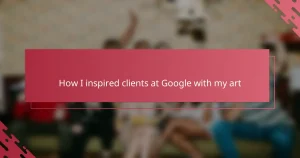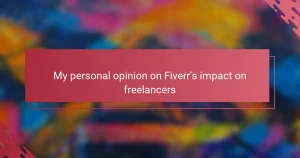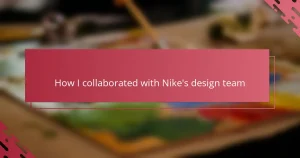Key takeaways
- Effective communication and understanding each client’s unique style are essential for building trust and avoiding misunderstandings.
- Managing expectations upfront regarding deliverables and timelines fosters transparency and enhances collaboration.
- Embracing feedback as a collaborative process, rather than a critique, leads to better outcomes and builds client confidence.
- Cultivating long-term client relationships requires consistent quality, genuine interest, and maintaining open communication beyond individual projects.
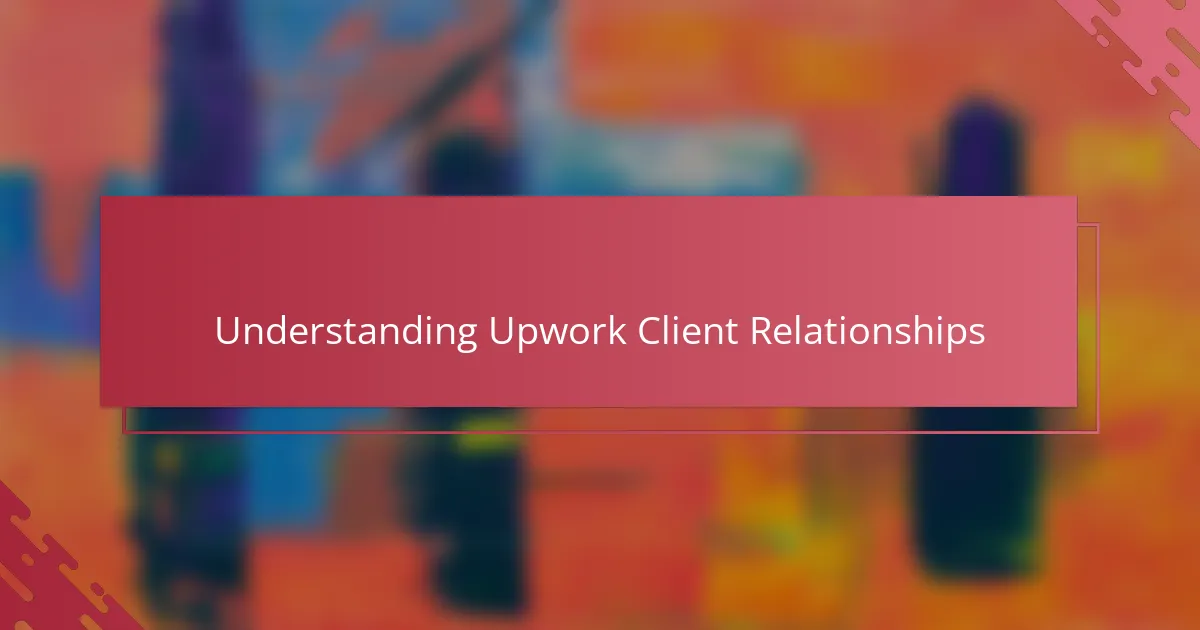
Understanding Upwork Client Relationships
Navigating client relationships on Upwork is more nuanced than I initially thought. It’s not just about delivering great work; it’s about building trust and communication—things that don’t come automatically on a platform where everyone is remote. Have you ever felt frustrated because a client’s expectations weren’t clear? That confusion is something I quickly learned to address upfront.
What struck me most was how each client’s communication style varies dramatically. Some are brief and expect rapid responses, while others want detailed updates and reassurance. Recognizing these differences early helped me tailor my approach and avoid misunderstandings that could have stalled projects.
I also realized that client relationships on Upwork are a two-way street. When I invested time in understanding a client’s vision, they, in turn, became more cooperative and trusting. Isn’t that the essence of any good working relationship, whether virtual or in person? This dynamic taught me that success isn’t just about skills, but genuine connection.
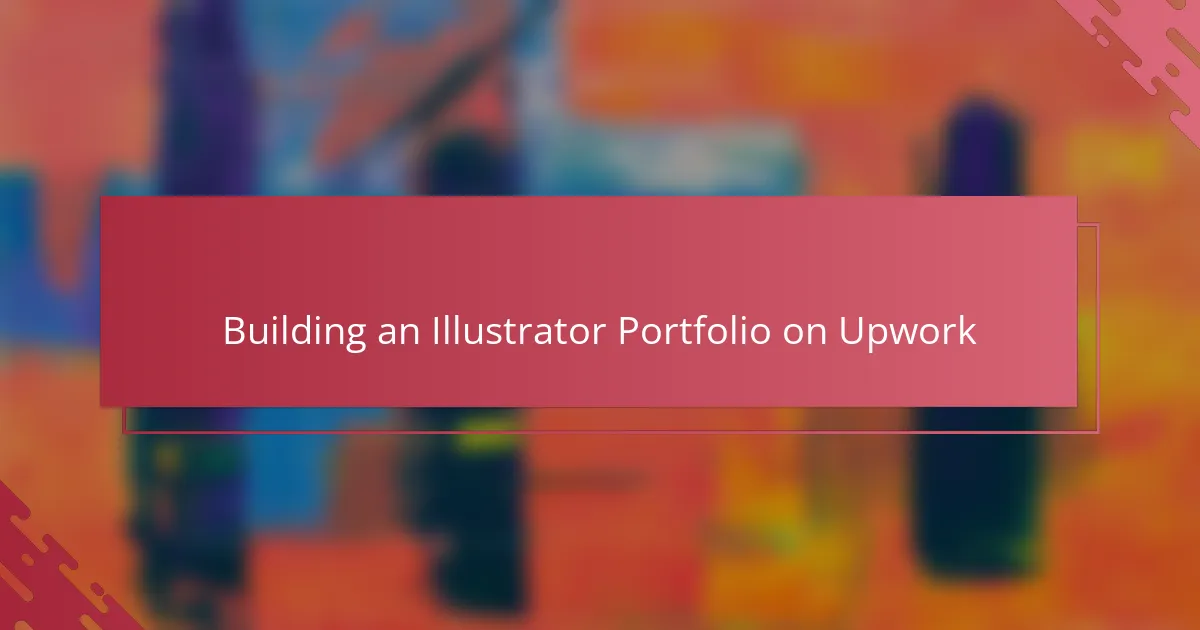
Building an Illustrator Portfolio on Upwork
Building an illustrator portfolio on Upwork felt like starting from scratch, and honestly, it was a bit intimidating at first. I remember posting my initial samples and wondering, “Will anyone appreciate my style here?” But I soon realized that consistency and showcasing a range of skills really made a difference in catching client attention.
I also found that curating portfolio pieces specifically for Upwork’s audience mattered a lot. Clients want to see versatility—can you handle a children’s book illustration as well as a sleek infographic? This pushed me to diversify my work and be selective about what I uploaded, making every piece count.
Have you ever thought about how your portfolio tells your story as an artist? For me, it wasn’t just about technical skill; it was about conveying my creative voice. That meant including projects that reflected my personality while meeting clients’ needs, which helped me attract the right collaborations on the platform.
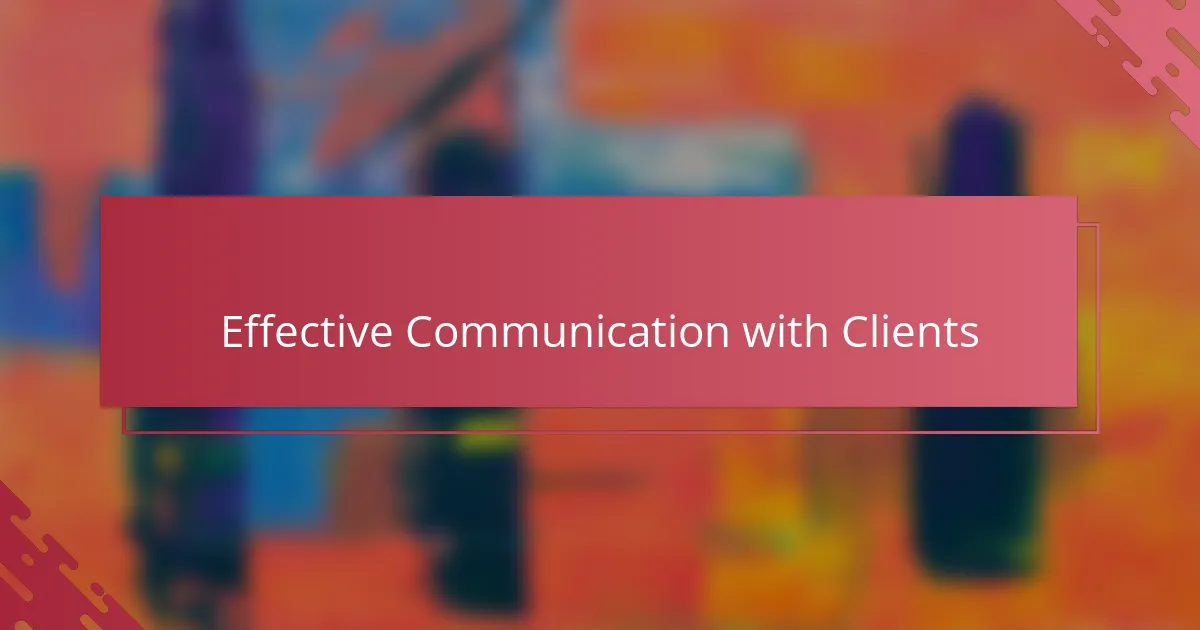
Effective Communication with Clients
One thing I quickly learned is that clear communication can make or break a project. Early on, I had a client who expected updates daily, but I assumed a weekly check-in was enough. That mismatch caused unnecessary stress, and I realized the power of simply asking, “How often would you like updates?” It saved me from second-guessing and built a smoother workflow.
I’ve also noticed that listening is just as important as talking. When clients feel heard, they open up about their vision, even if it’s vague at first. One client struggled to articulate what they wanted, but by patiently asking specific questions, I helped them clarify their needs. It wasn’t just about delivering illustrations—it became a collaborative creation.
Have you ever felt stuck trying to explain your ideas through text alone? I definitely have. That’s why I started using quick sketch drafts or voice messages to bridge gaps. This little extra effort often made clients feel more connected and confident in the process, turning distant clients into partners rather than strangers behind screens.
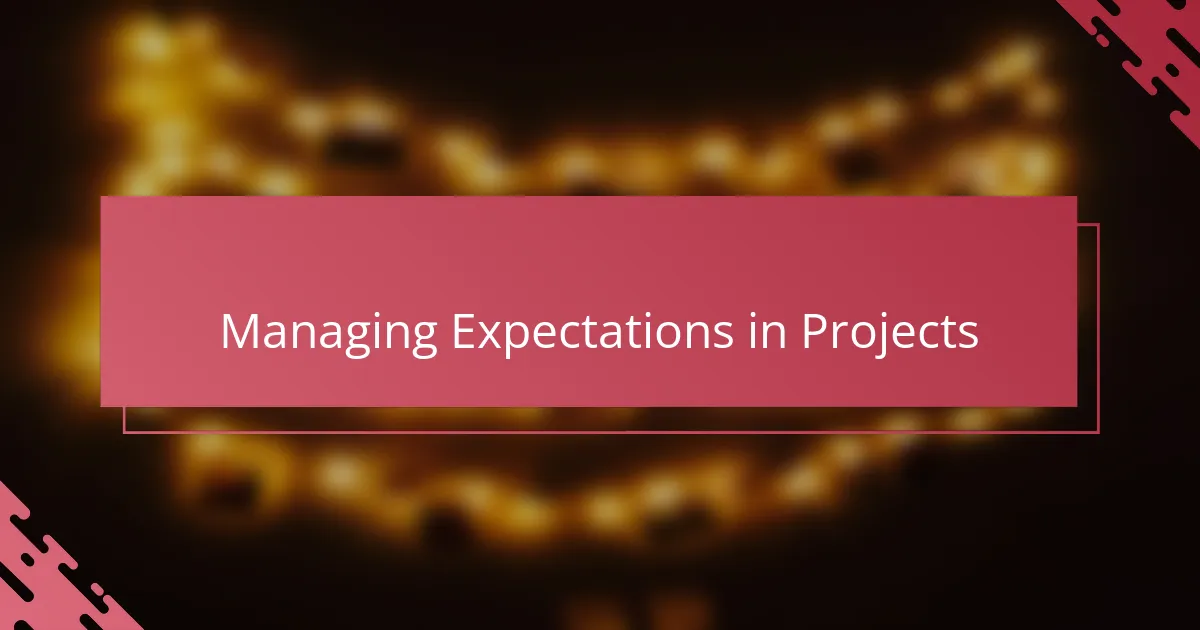
Managing Expectations in Projects
Managing expectations in projects became one of those eye-opening lessons I had to learn the hard way. Early in my Upwork journey, I assumed that once the scope was outlined, everything would flow smoothly—but it rarely did. Have you ever handed in work that met your standards, only to face a client who expected something quite different? That disconnect can be frustrating, so now I make it a point to clarify deliverables, timelines, and revisions right at the start.
Sometimes, setting these boundaries feels a bit uncomfortable, especially when you want to please the client. However, I found that transparent conversations about what’s realistic not only prevent disappointments but also build trust. For instance, when a client wanted an elaborate piece done in just a couple of days, I explained the creative process involved and suggested a more feasible schedule. They appreciated the honesty, and it resulted in a better final product.
What really helped me manage expectations was checking in regularly without waiting to be asked. I began sharing progress updates and discussing any potential shifts in the project scope as soon as they appeared. This proactive approach kept surprises at bay and reassured clients that their vision was always front and center. Have you tried this with your projects? In my experience, it transforms a simple transaction into a true collaboration.
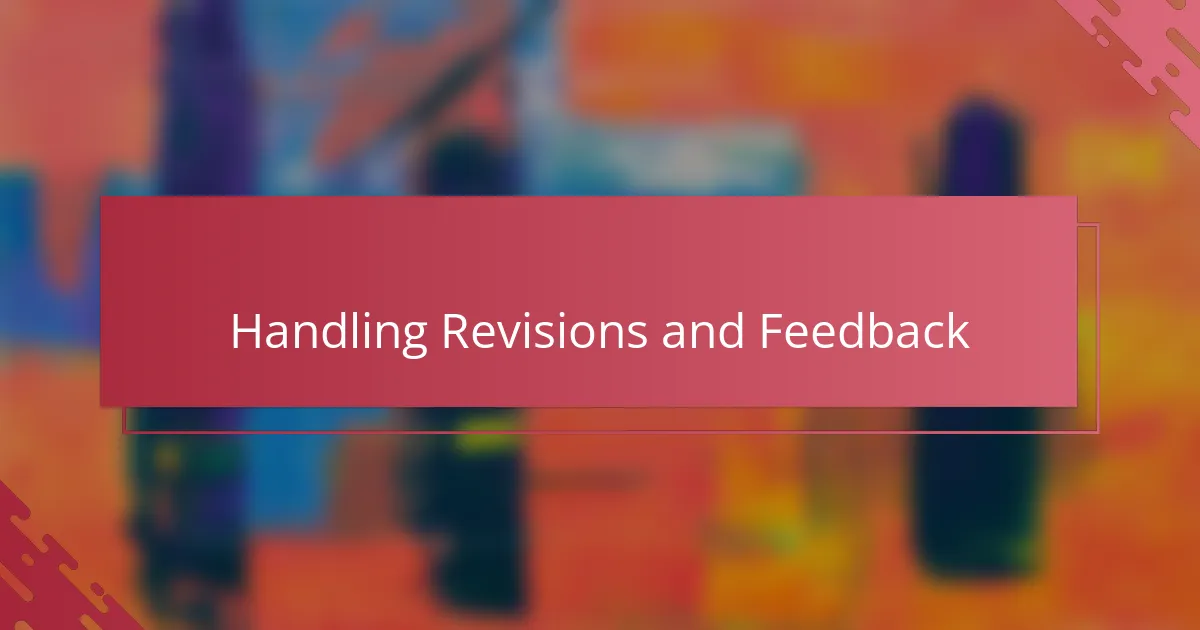
Handling Revisions and Feedback
Handling revisions and feedback on Upwork often felt like navigating a delicate dance. I remember one project where the client’s notes were so detailed and numerous, I initially felt overwhelmed—was I doing something wrong? But I realized that embracing feedback, no matter how extensive, was really about showing my commitment to their vision rather than taking it personally.
Have you noticed how some clients struggle to articulate exactly what they want until you show them a revised draft? In my experience, submitting early versions and inviting comments helped open a dialogue. It turned feedback into a collaborative process instead of a one-sided critique, which made me more confident and improved the final outcome.
At times, I had to set gentle boundaries on revisions to keep projects on track. I used to think saying “no” might offend, but being transparent about the scope and how many changes I could reasonably handle actually made clients respect my professionalism. Have you ever tried that? It changed the dynamic from endless revisions to constructive conversations.
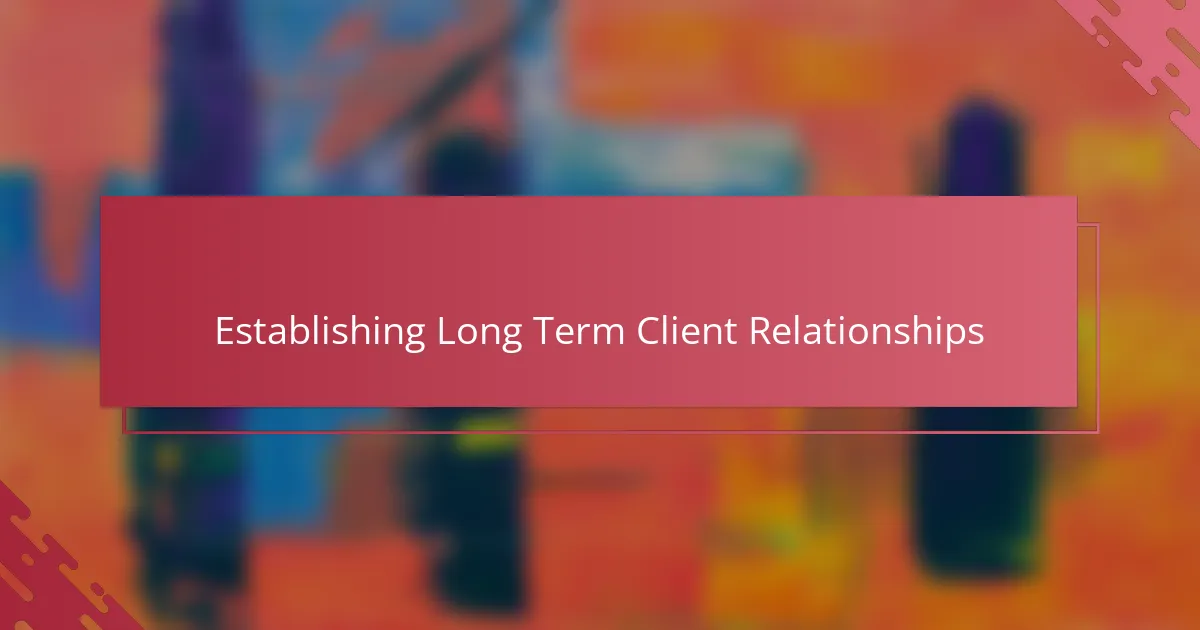
Establishing Long Term Client Relationships
Building long-term client relationships on Upwork isn’t something that happens overnight—it’s more like nurturing a plant. I found that consistently delivering quality work combined with honest communication laid the foundation. Have you ever noticed how clients often come back not just because of your skills, but because they trust you to understand their needs?
I remember one client who initially hired me for a single illustration but eventually invited me to work on multiple projects over the course of a year. What made that possible was the small things: checking in regularly, asking about their evolving goals, and being flexible when priorities shifted. It taught me that showing genuine interest in their success makes all the difference.
Do you ever wonder how to keep those connections strong after the project ends? For me, sending occasional updates or sharing relevant ideas has kept the door open for new collaborations. It’s that ongoing dialogue—beyond deadlines and contracts—that transforms a one-time gig into a lasting partnership.
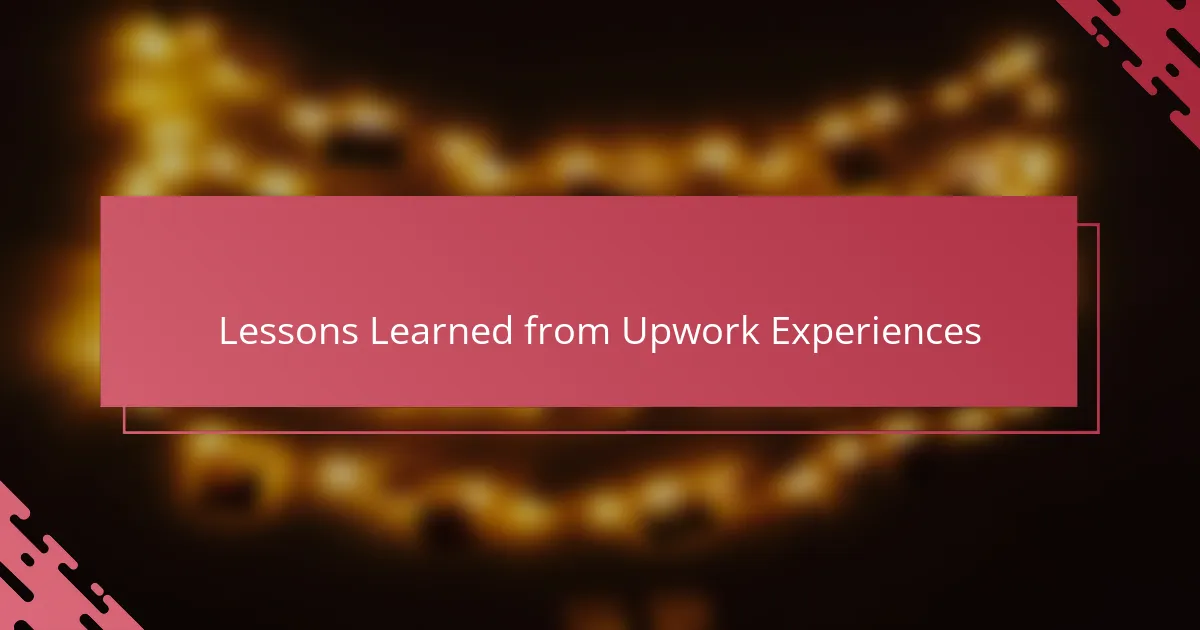
Lessons Learned from Upwork Experiences
One key lesson I learned from my Upwork experiences is the importance of patience. At first, I expected every project to flow seamlessly, but reality taught me otherwise. Have you ever felt the frustration of waiting for client feedback or revisions? I certainly have, and I realized that patience helps maintain professionalism and fosters better outcomes.
Another thing that stood out was how crucial adaptability is. Each client brought unique challenges and preferences, and sticking rigidly to one routine often backfired. For example, when a client suddenly shifted the project scope, I chose to embrace the change instead of resisting it. That willingness to adapt not only saved the project but also strengthened the relationship.
Lastly, I came to understand that building rapport is just as vital as delivering quality illustrations. I once formed a great connection with a client simply by sharing a bit about my creative process. It made the partnership feel more personal and less transactional. Doesn’t it feel rewarding when professional relationships grow into genuine collaborations?
